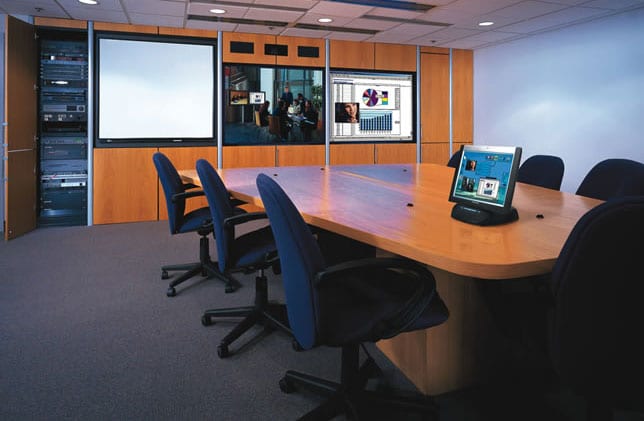

- #TVS FOR CONFERENCE ROOMS GENERATOR#
- #TVS FOR CONFERENCE ROOMS SOFTWARE#
- #TVS FOR CONFERENCE ROOMS PC#
Is its production of white light too red- or blue-tinted? Does it produce enough color for HDR content? Is it clipping off details on either end of the light spectrum? With one scan, we can get a good estimate of how a TV’s picture quality compares to the scientific standards.
#TVS FOR CONFERENCE ROOMS SOFTWARE#
We use Portrait Displays’ Calman software a program specifically designated for display measurement and calibration, to tabulate those measurements into easily readable charts and tables.
#TVS FOR CONFERENCE ROOMS GENERATOR#
When we measure TVs, we use a device called a signal generator to send test patterns to the screen, plus a meter (usually a tristimulus colorimeter) to measure the light and colors that the TV produces.

Major deviations from any of these targets can ruin a TV’s image and obscure details. Modern TVs should produce a white point that’s exactly 6500 K, roughly the flavor of unclouded daylight. A specific color temperature, designated in Kelvin, dictates how grayscale elements should look. There are also targets for the hue, saturation, and brightness of a TV’s primary colors (red, green, and blue) and secondary colors (cyan, magenta, and yellow), depending on whether the SDR or HDR color spaces are being used for what you’re watching. For example, we have behavioral targets for functions called gamma (for SDR video) and electro-optical transfer function (or EOTF, for HDR video), which specify how much light a TV should produce across a range of electrical stimulus levels. But what does it mean to have “scientific” standards for TVs? Essentially, it boils down to light and color production, two stimuli that can be easily measured.įor both SDR (standard dynamic range) and HDR (high dynamic range) content, there are designated light and color targets that a TV should hit. Scientific standards for HDTV performance have been in place since 1990, and scientific standards for UHD TV performance have been in place since 2015. Knowing some of these basic points before you start shopping around can simplify the process and narrow down your viable options. If you’re buying for a bedroom, you probably don’t need a huge screen.Īnd if your intended room is especially bright, you may want to spring for a premium LCD TV since such models get a lot brighter than budget LCD TVs or OLED TVs. If you’re not planning on playing video games or watching Blu-ray discs, you probably don’t need a TV with a 120 Hz refresh rate, which tends to raise the price.
#TVS FOR CONFERENCE ROOMS PC#
Personally, I’d go for the dedicated PC on the back of the TV, it is less hassle than running cables all around the room or putting up with his complaints about lag, if you are using a wireless if it is just a PC and it is just for the client, do they need a separate license? If it is a dedicated conference solution, that doesn’t use a PC, then it will probably need a special license. The Yealink & Logi that and mention sound good, or a conference microphone on the desk (like the old conference telephones). (Logitech do keyboards and mice that attach to multiple devices, he just needs to press a button on the keyboard to switch between his desktop/laptop and the conferencing PC, same with the mouse. Then it plugs into the docking station/desktop PC at his desk.Īlternatively, a mini PC on the back of the TV with a wireless mouse & keyboard on his desk, would allow for less delay, but he’d have a second mouse & keyboard cluttering up the place.

The same for the camera, long USB cable, or a wireless camera, again wireless brings lag to the party. If the TV isn’t smart, you will need to plug it into a PC, a long HDMI cable, run around the walls or through the hung ceiling, for example, or an HDMI repeater, which beams the signal - we use these in our conference rooms, but there is a small (1/4 second) delay when moving the mouse, for example, so a direct cable connection would be better.


 0 kommentar(er)
0 kommentar(er)
